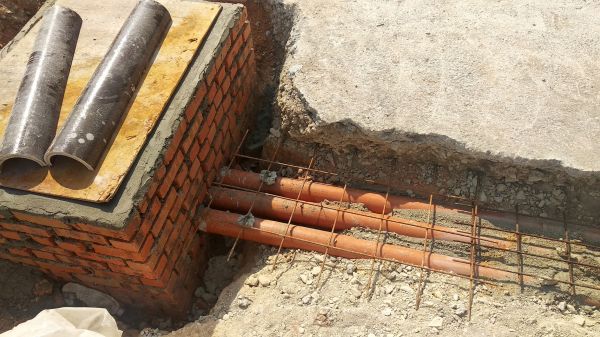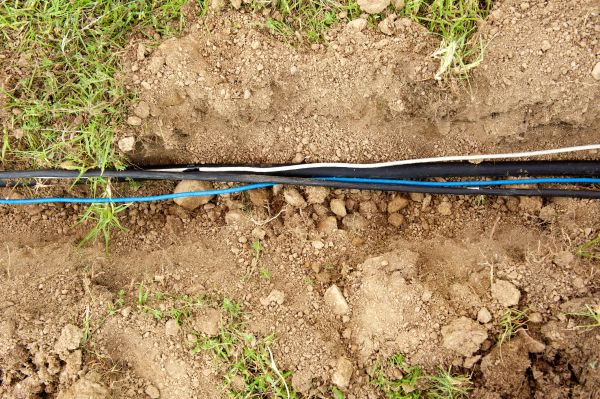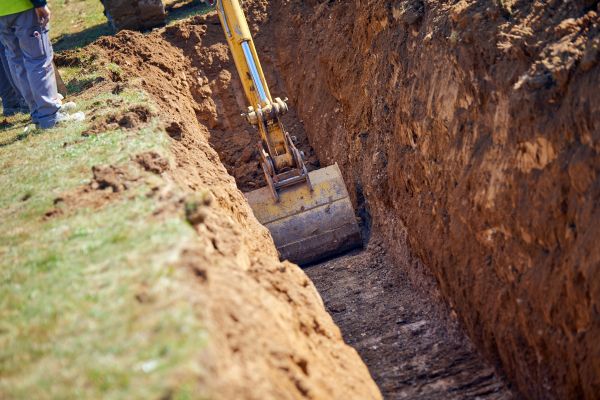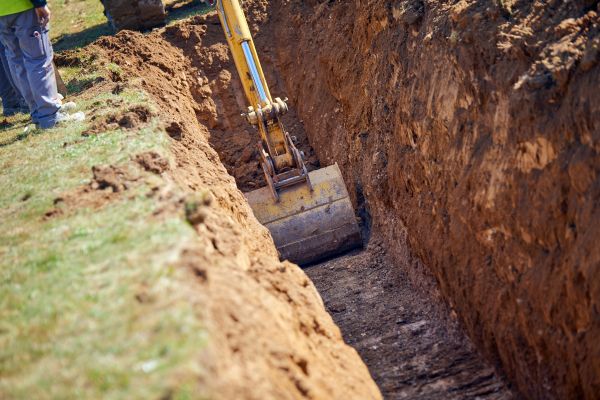Utility Trenching Service
Affordable Utility Trenching
Utility trenching is a critical process in construction and infrastructure development, involving the excavation of narrow trenches to install underground utilities such as water, gas, electricity, telecommunications, and sewage systems. This method ensures that essential services are safely and efficiently delivered to residential, commercial, and industrial areas. Proper utility trenching is vital to prevent future disruptions, ensure safety, and maintain the integrity of the surrounding environment. By strategically planning and executing trenching projects, communities can benefit from reliable utility services and reduced maintenance costs.
Benefits of Utility Trenching
-
Safety and Reliability
Utility trenching ensures that essential services are placed underground, reducing the risk of damage from environmental factors or human activities. This placement enhances the reliability of services such as electricity and water, minimizing outages and ensuring consistent delivery. -
Aesthetic Appeal
By placing utilities underground, utility trenching helps maintain the visual appeal of landscapes and urban areas. This approach eliminates the need for overhead wires and poles, resulting in a cleaner and more attractive environment. -
Increased Property Value
Properties with underground utilities often see an increase in value due to improved aesthetics and reduced risk of service interruptions. Buyers are often willing to pay more for homes and businesses that have reliable and discreet utility access. -
Environmental Protection
Properly executed utility trenching minimizes the environmental impact by reducing the need for repeated excavation and maintenance. This method helps preserve natural habitats and reduces soil erosion, contributing to a more sustainable development approach.
FAQs About Utility Trenching
What is utility trenching used for?
Utility trenching is used for installing and maintaining underground utilities such as water, gas, electricity, telecommunications, and sewage systems.
How deep are utility trenches typically dug?
The depth of utility trenches can vary depending on the type of utility being installed, local regulations, and soil conditions, but they are generally dug to a depth of 2 to 6 feet.
Why choose underground utility installation over overhead?
Underground installation is chosen for its increased safety, reliability, reduced maintenance, and aesthetic benefits, as it eliminates the need for visible wires and poles.
What precautions are taken during utility trenching?
Safety precautions include surveying and marking existing utilities, using proper shoring techniques, and adhering to local regulations to prevent accidents and ensure the safety of workers and the public.
Ready to enhance your property with professional Utility Trenching? Fill out the contact form today to request a consultation and experience the benefits of improved safety, reliability, and aesthetics.




